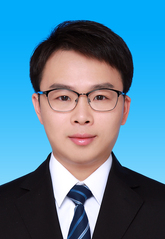
Tel:
Email: wwl20@sz.tsinghua.edu.cn
Address: Room 205, Building F, Tsinghua Campus, University Town, Shenzhen 518055
Sep. 2012 - Jul. 2018, Ph. D., Environmental Science and Engineering, School of Environment, Tsinghua University, China
Sep. 2008 - Jul. 2012, BEng., Environmental Engineering, School of Environment, Beijing Normal University, China
Oct. 2016 - Oct. 2017, Visiting Scholar, Chair of Urban Water Systems Engineering, Technical University of Munich, Germany
Oct. 2013 - Jan.2014, Visiting Scholar, National Institute of Advanced Industrial Science and Technology (AIST), Japan
Jun.2023-Now, Associate Professor, Tsinghua Shenzhen International Graduate School, China
Nov. 2020 - Jun. 2023, Assistant Professor, Tsinghua Shenzhen International Graduate School, China
Nov. 2021 – Oct. 2022, Alexander von Humboldt Fellowship, Technical University of Munich, Germany
Jul. 2018 – Nov. 2020, Postdoc. / Assistant Specialist, School of Environment, Tsinghua University, China.
[1]. Member and project leader of Technical Committees 282 Water Reuse SC1 and SC2 International Standardization Organization
[2]. Member Chinese Society for Environmental Sciences
[3]. Member of Early Career Editorial Board Journal of Hazardous Materials
[4]. Editor of Water Data & Facts Session of the Water Cycle
[5]. Guest Editor of Water Reuse
[1]. Drinking Water Treatment Technology (in English)
[2]. Technology for Wastewater Treatment and Reuse (in English)
Dr. Wang’s research focuses on fields of water pollution control, wastewater advanced treatments, ultrapure water production, and water reuse. Research directions include water quality conversion and research methods, water risk assessment, advanced physical and chemical treatment technology (advanced oxidation technology, etc.), pollutant conversion and risk reduction, and water cycling.
[1]. National Natural Science Foundation of China (2023, 2025) (General Program)
[2]. National Natural Science Foundation of China (2021) (Youth Program)
[3]. Shenzhen Municipal Science and Technology Innovation Committee
[4]. National Postdoctoral Program for Innovative Talents of China
[5]. China Postdoctoral Science Foundation Grant
2021年后的代表性论文 (Representative publications since 2021)
1) Cai Xin-Hao, Peng Lu, Zhu Ping, Liu Peng-Hui, Qin Yuan-Chu, Jing Zi-Bo, Zhu Hao-Jie, Huang Cheng-Cheng, Son Jung-Hyun, Lee Ju-Won, Chen Yan-Lin, Wang Wen-Long*, and Wu Qian-Yuan*. 2025. Kirkendall Effect-Driven Interface Engineering Facilitates Water Dissociation for Dual-Site H2O2 Electrosynthesis Simultaneously at the Anode and Cathode, Angewandte Chemie International Edition, n/a: e202512046.
2) Nong Yu-Jia, Wu Qian-Yuan, Qin Yuan-Chu, Jing Zi-Bo, Wang Er-Dong, Bai Qing, and Wang Wen-Long*. 2025. Enhanced Photolysis of Sulfite by Far-UVC (222 nm) and Efficient Photoreductive Degradation and Dehalogenation of Halogenated Organic Pollutants, Environmental Science & Technology, 59: 16011-16020.
3) Nong Yu-Jia, Wu Qian-Yuan, Wu Yun-Peng, Lee Ju-Won, Lee Min-Yong, Wang Wen-Long*. Far-UVC (UV222) based photolysis, photooxidation, and photoreduction of chlorophenols using a KrCl-excimer lamp: Degradation, dechlorination, and detoxification. Water Research. 2025, 268: 122560.
4) Wang Wen-Long, Bai Qing, Wu Yun-Peng, Ouyang Wan-Yue, Lee Min-Yong, Wu Qian-Yuan. Multiple Roles of Anions on the Degradation Efficiency and Mineralization Pathway of Recalcitrant Acetaldehyde by Vacuum Ultraviolet (185 nm) Oxidation. Environmental Science & Technology. 2024, 58 (38): 17015-17025.
5) Wang Yu, Wu Qian-Yuan, Lee Min-Yong, Nong Yu-Jia, Wang Wen-Long*, Drewes Jörg E. Efficient Electrocatalytic Hydrodechlorination and Detoxification of Chlorophenols by Palladium–Palladium Oxide Heterostructure. Environmental Science & Technology. 2024:
6) Wang Wen-Long, Jing Zi-Bo, Zhang Yi-Lin, Wu Qian-Yuan, Drewes Jörg E., Lee Min-Yong, Hübner Uwe. Assessing the Chemical-Free Oxidation of Trace Organic Chemicals by VUV/UV as an Alternative to Conventional UV/H2O2. Environmental Science & Technology. 2024, 58 (16): 7113-7123.
7) Bai Qing, Wu Qian-Yuan, Ye Bei, Wu Yun-Peng, Lee Ju-Won, Lee Min-Yong, Wang Wen-Long*. Assessing excimer far-UVC (222 nm) irradiation for advanced oxidation processes: Oxidants photochemistry and micropollutants degradation. Water Research. 2024, 267: 122505.
8) Jing Zi-Bo, Wang Wen-Long*, Nong Yu-Jia, Peng Lu, Yang Zi-Chen, Ye Bei, Lee Min-Yong, Wu Qian-Yuan. Suppression of photoreactivation of E. coli by excimer far-UV light (222 nm) via damage to multiple targets. Water Research. 2024, 255: 121533.
9) Wu Qian-Yuan, Yang Zheng-Wei, Wang Zhi-Wei, Wang Wen-Long*. Oxygen Doping of Cobalt-Single-Atom Coordination Enhances Peroxymonosulfate Activation and High-Valent Cobalt-Oxo Species Formation. Proceedings of the National Academy of Sciences (PNAS). 2023, 120(16): e2219923120.
10) Cai Han-Ying, Wu Qian-Yuan, Ouyang Wan-Yue, Hu Hong-Ying, Wang Wen-Long*. Efficient removal of electroneutral carbonyls by combined vacuum–UV oxidation and anion-exchange resin adsorption: mechanism, model simulation, and optimization. Water Research. 2023, 243: 120435.
11) Han Wei-Ran, Wang Wen-Long*, Qiao Tie-Jun, Wang Wei, Su Hang, Xu Chen-Xin, Wu Qian-Yuan. Ozone micro-bubble aeration using the ceramic ultrafiltration membrane with superior oxidation performance for 2,4-D elimination. Water Research. 2023, 237: 119952.
12) Ye Bei, Wu Qian-Yuan, Wang Wen-Long*, Hu Hong-Ying. PPCP degradation by ammonia/chlorine: Efficiency, radical species, and byproducts formation. Water Research. 2023, 235: 119862.
13) Du Ye#, Wang Wen-Long#, Wang Zhi-Wei, Yuan Chang-Jie, Ye Ming-Qi, Wu Qian-Yuan. Overlooked cytotoxicity and genotoxicity to mammalian cells caused by the oxidant peroxymonosulfate during wastewater treatment compared with sulfate radical-based ultraviolet/peroxymonosulfate process. Environmental Science & Technology, 2023, 57(8): 3311–3322. (#Equal contribution)
14) Ouyang Wan-Yue, Wang Wen-Long*, Zhang Yi-Lin, Cai Han-Ying, and Wu Qian-Yuan. VUV/UV oxidation performance for the elimination of recalcitrant aldehydes in water and its variation along the light-path. Water Research. 2023, 228: 119390.
15) Wang Wen-Long, Nong Yu-Jia, Yang Zheng-Wei, Wu Qian-Yuan, and Hübner Uwe. Chlorination of isothiazolinone biocides: kinetics, reactive species, pathway, and toxicity evolution. Water Research. 2022, 223: 119021.
[1]. Alexander von Humboldt Fellowship
[2]. Postdoctoral Innovative Talent Support Program (PI)